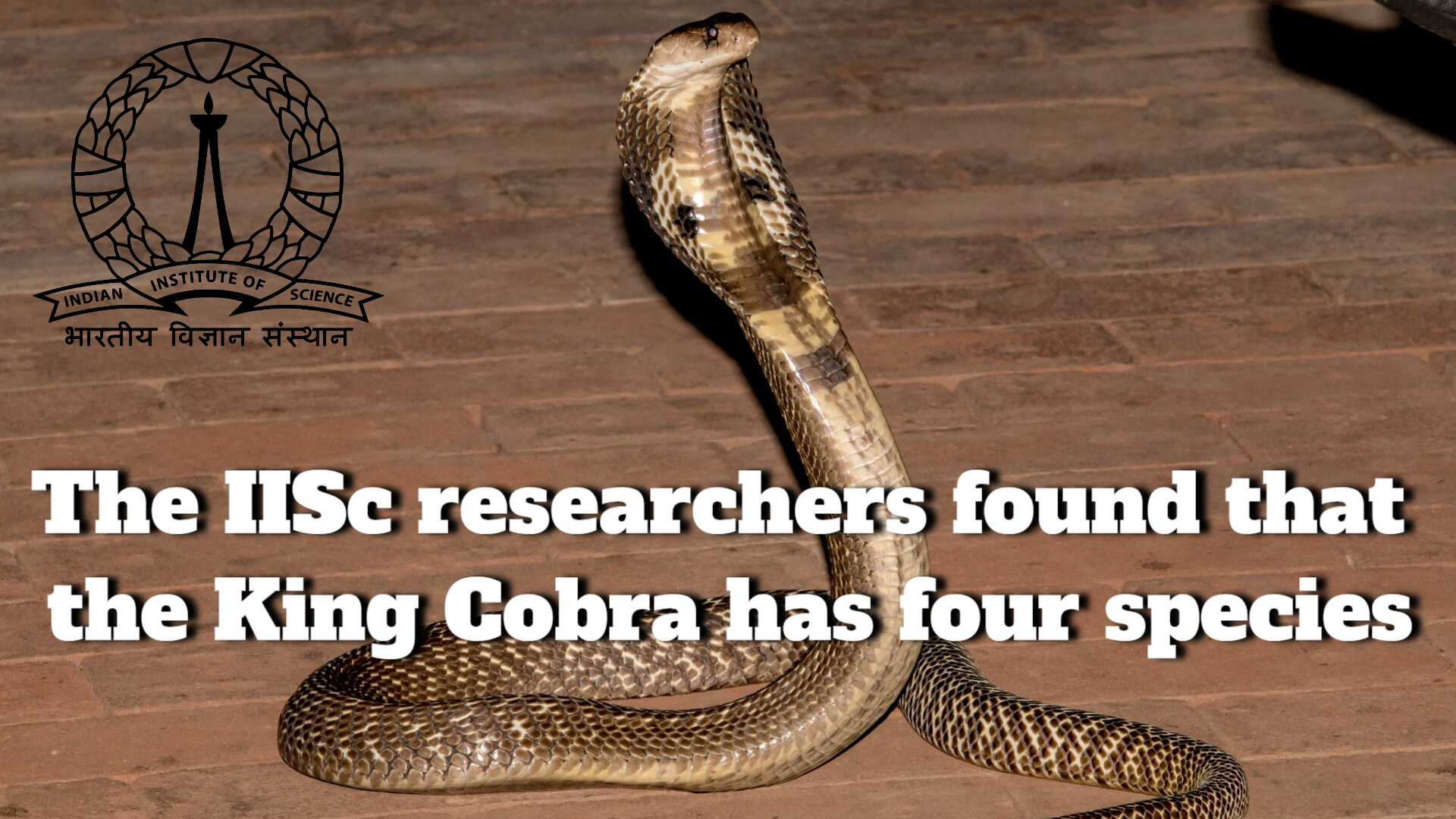The King Cobra was thought of as a single species for nearly two hundred years. Using cutting-edge genetic tools, a global team led by IISc Bengaluru researchers discovered. One of the most recognizable creatures on the planet is the King Cobra. According to the IUCN Red List (IUCN, 2012), it is currently considered Vulnerable because of its wide geographic range. Because of this, they may need to have their threat level raised.
Key Highlight:
- For nearly two centuries, the King Cobra was thought to be a single species that lived in forests from India to the Philippines.
- Using cutting-edge genetic tools, a global team led by IISc Bengaluru researchers discovered.
- Four distinct lineages of King Cobras have been identified: one in the Western Ghats, another in forests extending from the Himalayan foothills and the Eastern Ghats all the way to China and Southeast Asia.
- Isolated populations of the four lineages can be found on the Andaman island, in Peninsular Malaysia, across the Greater Sunda Islands, in the southeast to Bali.
For nearly two centuries, the King Cobra was thought to be a single species that lived in forests from India to the Philippines. However, there are four distinct species of King Cobra. Using cutting-edge genetic tools, a global team led by IISc Bengaluru researchers discovered.
However, the scientists believe that their discovery could lead to more effective anti-venom formulations in the future, which would benefit conservation efforts to protect the iconic snake.
Four distinct lineages of King Cobras have been identified: one in the Western Ghats, another in forests extending from the Himalayan foothills and the Eastern Ghats all the way to China and Southeast Asia, and a fourth on Luzon Island in the Philippines. Isolated populations of the four lineages can be found on the Andaman island, in Peninsular Malaysia, across the Greater Sunda Islands (Sumatra, Java, Borneo), in the southeast to Bali, and in the
“As a result of the four species’ dispersed distribution, various conservation strategies would be required. For example, the species found on the Philippine island are more vulnerable and necessitate greater conservation efforts, “Indian Institute of Science researcher and study’s lead author, P Gowri Shankar, says
A Danish naturalist named Theodore Edward Cantor first wrote about King Cobra (Ophiophagus hannah) in 1836. Cantor found four of the snakes, three in the Sundarbans and one near Kolkata.
Until Shankar and his colleagues’ genetic studies, scientists considered the snakes a single species for the last 185 years. Along with researchers from the United Kingdom and the Netherlands, the group includes members from Sweden, the United States, and Malaysia.
There were two distinct lineages of this reptile in peninsular India due to the dry climate of the Western and Eastern Ghats. As a result, the Western Ghat species is restricted to a small geographical area while the eastern one has been found in the Himalayan foothills, China, and other parts of Asia ” MorpholoEy isn’t always truthful in his accounts. Larger populations of King Cobras, such as those found in the Western Ghats and the Luzon Islands, may face fewer threats, so conservation efforts should focus on these two populations “Kartik Shanker, an ISc professor and team member, echoed these sentiments.
“As a result of our research, we now know more about the king cobra, one of the world’s most well-known animals. As a result of its wide distribution, it is currently classified as Vulnerable (IUCN, 2012) on the Red List. based on this research it appears they need to have their threat level upgraded, “the study was published in the journal Molecular Phylogenetics and Evolution recently.
A new lineage of Kiwi in New Zealand; the Sunda clouded leopard in Indonesia; Tapanuli Orangutans in northern Sumatra and, most recently, Indus river dolphins have all been identified thanks to genetic studies conducted in the last two decades.
“The King Cobra, viewed for nearly two hundred years as a single species found in forests from India to the Philippines, actually belongs to four distinct species, an international team including researchers from IISc Bengaluru has found using sophisticated genetic tools.” pic.twitter.com/cdziGJmV0B
— Graphenes (@Graphenes1) October 16, 2021





[…] Researchers at IISc found that the King Cobra has four distinct… […]